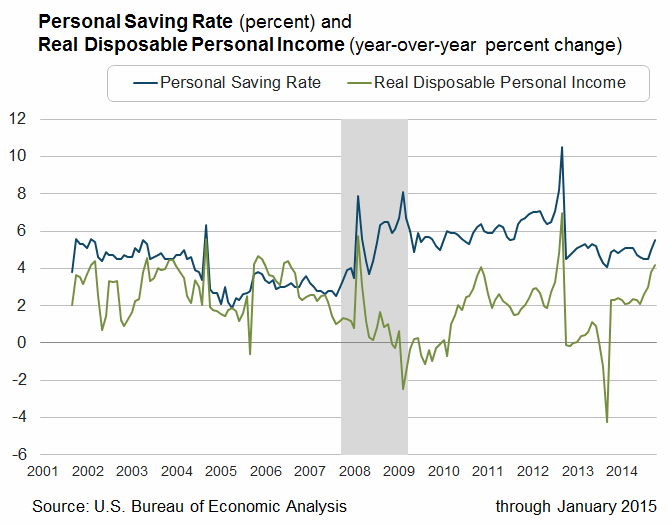The measure preferred by the Fed for tracking inflation, The
Personal Consumption Expenditures Price Index, which is also compiled by the
U.S. Bureau of Economic Analysis, is already below the Federal Open Market
Committee’s (FOMC) explicit objective.
The Index has been extending its trend lower in recent months. The
headline measure [which includes oil] is far lower of course than the core measure
which is meant to be more stable over time. The core measure is also falling,
which indicates that some of the downward pressure on consumer prices is
already baked into our ‘economic cake’. The irony of the situation is that what
is playing out among households across the United States was first demonstrated
by the commercial banks with new Fed money; they saved or deleveraged, and
would only spend on investments that were high priority.
After all, the American consumer has not received a real raise
in quite some time, so it would be somewhat difficult to save and consume at
the same time especially since job confidence took a huge hit with the
2008-2009 recession. It is also generally agreed that American debt (both
households and government) was reaching unsustainable levels leading up the
Great Recession. The Fed helped the banks, the Federal Government didn’t do
much, and now households are finishing the job of the public sector. Americans
will continue to save until the collective urge for gratification becomes
overwhelming, and then the savings accounts, retirement accounts, home equity,
credits cards, and student loan money will be unleashed unto the global economy
again. And of course, the banks will be there with a new and improved list of
financial instruments that are guaranteed to make the world a better place.



No comments:
Post a Comment